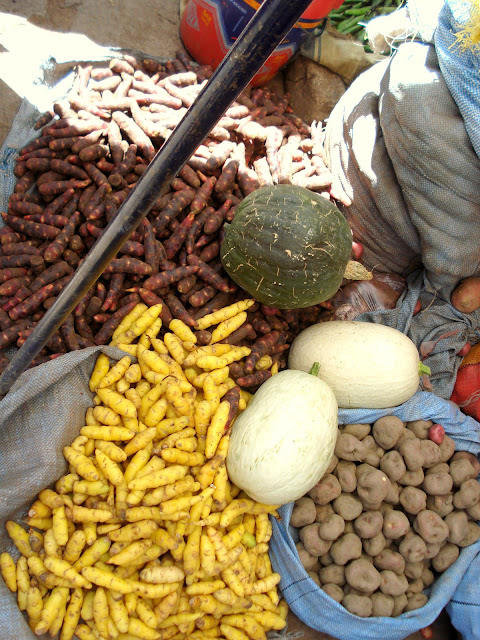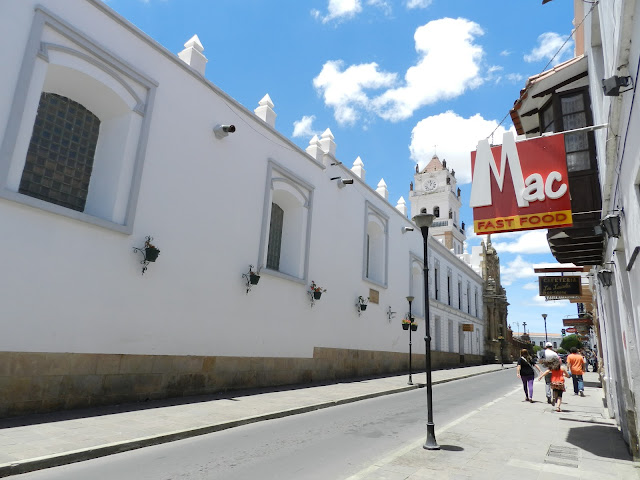
During the Eastern long weekend, I had the chance to visit the city of Cochabamba. It is known as the city of the eternal spring as it is lower than La Paz, and its weather is always mild. Is around 1000 meters lower than La Paz, the warm weather plus the lower altitude causes that flowers, green plants and trees be all over the place, a huge contrast when you come from La Paz. It is about six to eight hours trip heading south of La Paz. Even though the distance is around 375 kilometers, the conditions of the highway and its multiple curves (surrounding the mountains), do not allow drivers to go fast, most of the time the average speed is around 50-60 kph.
Unfortunately for me, as a consequence of the Long weekend, most of museums, shops and historic sites were closed. However, I decided to walk around downtown area, where lots of families and kids were hanging out as everybody had the day off. It is nice to see the family environment of the place, and appreciate small joys such as spending all afternoon with friends and relatives around the plaza.



Plaza 16 de Septiembre- Downtown Cochabamba
Even though Cochabamba city has grown a great deal during the last years, its core downtown remains pretty traditional, you have a sort of feeling that you are in small town. The main plaza is surrounded by the Cathedral, the municipality, and some restaurants. There are plenty of merchants offering their products such as newspapers, balloons and candies for the kids, ice creams, and traditional water with fruits (the popular Bolivian Mocochinci, dry peach in water).
 As commonly designed Latin plazas, there is a fountain at the middle of the plaza, a tower with the statue of Condor, a symbol representing the Andes region. The Cholitas (women dressed up with traditional clothes and from indigenous background) here are dressed up in a different way compared to La Paz, their skirt is shorter, and they are not that much covered, most probably because Cochabamba is far warmer than La Paz.
As commonly designed Latin plazas, there is a fountain at the middle of the plaza, a tower with the statue of Condor, a symbol representing the Andes region. The Cholitas (women dressed up with traditional clothes and from indigenous background) here are dressed up in a different way compared to La Paz, their skirt is shorter, and they are not that much covered, most probably because Cochabamba is far warmer than La Paz.As Eastern Time rules, Catholics have forbidden eating red meat, for this reason most markets were selling fish, mainly from closer lakes. Sellers were offering their fish on the streets, some of them without any ice (I supposed they were really fresh). The vendors take the scams of the fish, and clean and cut the fish in pieces as you request. The markets are full of very diverse fruits and vegetables; especially Bolivia has an amazing diversity in types of potatoes. As Cochabamba is at the center of the country, a great deal of fresh fruits can be purchased at a very affordable price… Chirimoyas, pacay, copoazu….
Women sell their fruits and vegetables on the floor, and if you buy a lot, you can negotiate the price with them.
My favorite fruit so far is Chirimoya, here you can buy one for 50 cents Bs. It seems that most of these fruits are sold in South America, and unfortunately cannot be found easily elsewhere.
 |
| Chirimoyas |

































